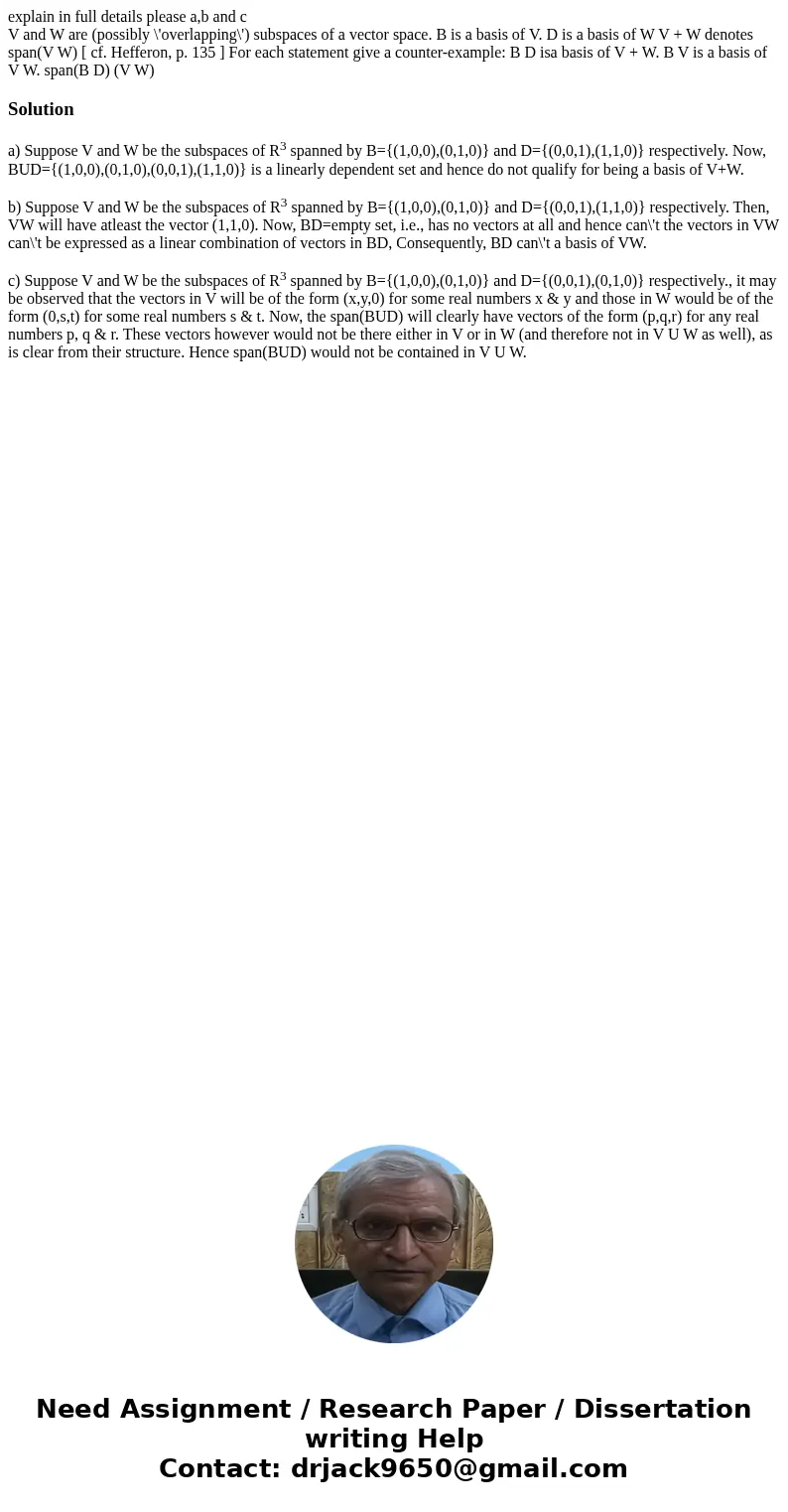explain in full details please ab and c V and W are possibly
Solution
a) Suppose V and W be the subspaces of R3 spanned by B={(1,0,0),(0,1,0)} and D={(0,0,1),(1,1,0)} respectively. Now, BUD={(1,0,0),(0,1,0),(0,0,1),(1,1,0)} is a linearly dependent set and hence do not qualify for being a basis of V+W.
b) Suppose V and W be the subspaces of R3 spanned by B={(1,0,0),(0,1,0)} and D={(0,0,1),(1,1,0)} respectively. Then, VW will have atleast the vector (1,1,0). Now, BD=empty set, i.e., has no vectors at all and hence can\'t the vectors in VW can\'t be expressed as a linear combination of vectors in BD, Consequently, BD can\'t a basis of VW.
c) Suppose V and W be the subspaces of R3 spanned by B={(1,0,0),(0,1,0)} and D={(0,0,1),(0,1,0)} respectively., it may be observed that the vectors in V will be of the form (x,y,0) for some real numbers x & y and those in W would be of the form (0,s,t) for some real numbers s & t. Now, the span(BUD) will clearly have vectors of the form (p,q,r) for any real numbers p, q & r. These vectors however would not be there either in V or in W (and therefore not in V U W as well), as is clear from their structure. Hence span(BUD) would not be contained in V U W.

 Homework Sourse
Homework Sourse